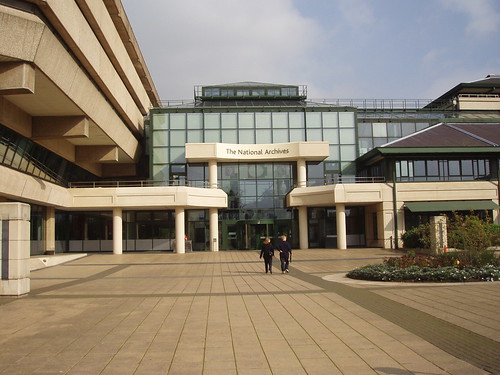On November 9th, a number of London based trainees made our way over to City University for their Information Science open evening. After a thought-provoking video demonstrating the limitless nature of information in the 21st century, we were given a presentation by Lyn Robinson, director of the Information Studies programmes taught at City:
Information Science
Library Science
Information Management in the Cultural Sector
The presentation was incredibly informative, discussing those qualities unique to the course at City, the vast array of graduate destinations, funding (or lack of) and the differences between the three courses offered via the Information Studies programme.
Many trainees who want to stay on in London end up choosing between the ‘traditional’ UCL course and the ‘technological’ City course, but, as well a focus on advancements in information technology, Lyn stressed the importance of recognising that the course at City is very academic in nature and that much of what is taught has a strong theoretical focus. For me, this was a major selling point for the course but for those with less interest in the theoretical or philosophical aspects of information science, this might not be such a great choice!
Many of us were wondering what the differences were between the Information Science course and the Library Science course and as it turns out, the answer is very little, but I will try to differentiate between them:
The Library Science course would be better targeted to those who wish to end up working with specific collections aimed at a specific audience for example the collections available at the Institute of Historical Research, the Warburg Institute or the Institute of Classical Studies. It is perhaps geared to those with a stronger academic subject focus, possibly those that wish to become subject librarians.
The Information Science course deals with, but is not confined to, libraries with a more vocational emphasis, such as law libraries, business libraries, media libraries etc. many of which could be in the private sector. The optional modules for Information Science seem to place slightly heavier weighting on digital solutions, though this is strong for both courses.
The Information Management in the Cultural Sector course runs slightly differently as you become a student of both the LIS department and the CPM (Cultural Policy Management) department. This is for those wishing to enter librarianship within the cultural sphere i.e. libraries at places such as the V&A, museum libraries, gallery libraries etc. with a heritage/arts focus. There was no representative for the CPM department so it was hard to know exactly what experience they expect regarding the heritage/arts industry, and Lyn mentioned that those with a limited background in these areas might struggle with some of the content but again, this was quite vague.
For those wishing to go into rare books, manuscript studies etc. definitely look at other courses. Technological competency is an absolute must, and the course challenges the whole notion of the library as a physical collection within a traditional space.
Overall, the course sounded very interesting and both members of the LIS department that were present were very knowledgeable and helpful. On a less upbeat note, there was uncertainty as to whether there was any AHRC funding for 2012 entry available, and (although this is still uncertain) fees are likely to be £6,000 or above. City also does not offer placements as part of the course, though there are occasionally possibilities for volunteering. Apart from a couple of optional modules where there is an exam, all assessment is based on written assignments.
You can follow the current intake on twitter at #iss1112 or Lyn Robinson @lynrobinson
Hannah (IHR)




